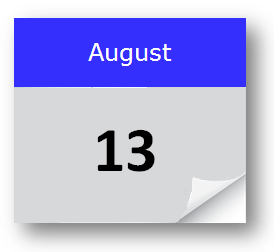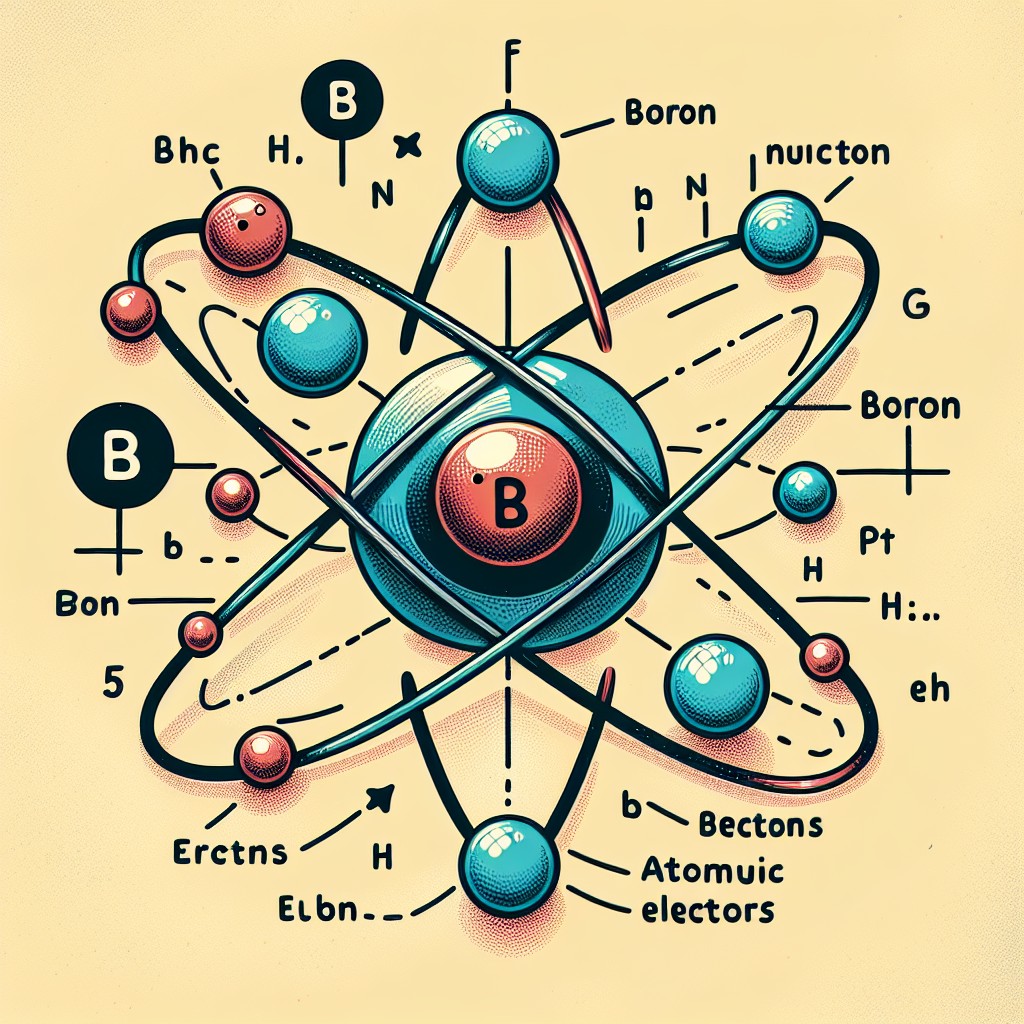| Date | Type | Event |
|---|---|---|
| 1920-01-10 | In 1920 the Versailles Treaty came into effect on this day. The Versailles Treaty was signed on the 28th of June 1919 coming into effect on the 10th of January the following year. This treaty officially ended the First World War and put many restrictions on Germany. Germany was required to accept full responsibility for the war under Article 231, the infamous War Guilt Clause. This clause justified the imposition of reparations, initially set at 132 billion gold marks (approximately $269 billion today), a sum that crippled Germany’s post-war economy. The treaty also created the League of Nations, an international organization aimed at preventing future conflicts. However many claim that it was the Treaty of Versailles that led to World War II as the harsh conditions imposed on Germany made the perfect conditions for Hitler's rise to power. Germany's army was limited to 100,000 troops, conscription was banned and Germany was prohibited from maintaining tanks, submarines, or an air force. Circumventing Restrictions However, Germany continued training its pilots using civilian training schools as a cover. Later in 1924, Germany became more daring and aided by Russia they began training in a secret airfield in Lipetsk, Russia using larger military aircraft. Shortly after Adolf Hitler came to power as chancellor on the 30th January 1933 he ordered the large-scale production of military aircraft and training of pilots under the command of Herman Goering. The Luftwaffe was created on the 15th of May 1933 and thanks to huge financial support within three years the secret air force soon became the largest and most powerful air force in the world. Russia also hosted a secret tank school (Kama tank school) in Kazan, Russia which ran from 1929 - 1933 to allow the German military to circumvent the ban on tanks. Additionally, in Volsk (modern-day Shilkhany), Russia was the site of the secret Tomka gas test site where the German and Soviet military tested chemical weapons (again to circumnavigate Germany's restrictions from the Versailles Treaty). Tomka ran from 1926 till 1933. Versailles Failures The Allied nations themselves were divided in their reactions. France celebrated the treaty as a necessary safeguard against future German aggression. Britain, while satisfied with some aspects, harboured concerns that the harsh terms might destabilize Germany and Europe. In the United States, opposition to Wilson’s vision led the Senate to reject both the treaty and membership in the League of Nations. For Germany, the Treaty of Versailles was a bitter pill to swallow. The loss of territory, severe military restrictions, and the economic burden of reparations fostered a sense of humiliation and betrayal. Many Germans referred to it as a “Diktat”—a dictated peace. This widespread resentment created fertile ground for extremist ideologies, including the rise of Adolf Hitler and the Nazi Party. Today, the treaty serves as a cautionary tale about the dangers of imposing punitive peace terms and the importance of balancing justice with reconciliation. It reminds us that the seeds of future conflicts are often sown in the soil of unresolved grievances. | |
| 1920-02-13 | In 1920 the Neutrality of Switzerland was recognised by all members of the League of Nations (the predecessor to the United Nations). Switzerland’s Neutrality was first recognised at the Congress of Vienna, where the major powers of Europe met in Vienna to discuss international policies after the defeat of Napoleon. Switzerland had been invaded and occupied by the French until 1803 and they wished to be recognised as a Neutral country to prevent another invasion. Its geographic location and diverse population also made neutrality a sensible choice for the country. Swiss Neutrality was re-affirmed by the League of Nations during the Versailles conference and as such the League of Nations chose the Swiss city of Geneva as the home for their headquarters. | |
| 1920-08-13 |
In 1920 the “Battle of Warsaw” begins as part of the “Polish-Soviet War” (February 1919 - March 1921).
The Kingdom of Poland dates back to 1025 and on the 1st of July 1569, with the signing of the Union of Lublin, the Polish-Lithuanian Commonwealth was formed. Both countries remained in Union until the late 18th century when three great powers of Europe began to carve up the territories. The Russian Empire had become very powerful and had many victories against the Ottoman Empire and in order to prevent war between Russia, Austria and the Kingdom of Prussia it was agreed that they would each assume land from the Polish-Lithuanian commonwealth which would return the balance of power between these countries. On the 5th of August 1772 territory from the commonwealth was first seized and without any choice in the matter the Polish Parliament was forced to agree to the arrangement in 1773. This didn’t appease the countries of Russia and Prussia who invaded the commonwealth once more some twenty years later. On the 23rd of January 1793 the Second Partition was signed and even more territory lost. In 1794 the people of Lithuania and Poland, angered by the loss of their sovereignty, began to rebel in what became known as the “Kościuszko Uprising” but severely outnumbered the rebellion was soon crushed and on the 24th of October 1795 the Third Partition took place in response to the uprising and this effectively ended the sovereignty of Poland and the Commonwealth.
During World War I Austro-Hungary and Germany (which was the unification of Prussia, Saxony and Bavaria in 1871) wanted the Polish people to remain loyal and not take advantage of the situation and begin a rebellion. So on the 6th of November 1916 Austro-Hungary and Germany agreed to the formation of a semi-autonomous Kingdom of Poland. When the Central Powers seemed all but defeated on the 7th of October 1917 Poland declared their independence and with the defeat of Germany and Austro-Hungary came the Independence of Poland and Lithuania.
The Western leaders recognised the independence of Poland but Russia was still initiating their new Communist Government after their Revolution in 1917. The New Polish leader, Jozef Klemens Pilsudski, wanted to return the sovereignty of all Poland back to the territory it had before it’s first Partition in 1772. He believed that Russia would not accept the Independence of these nations and return of the territory which technically still remained part of Russia and the Ukraine. Pilsudski proposed a union once more between Poland and Lithuania as their combined strength may be more of a deterrent against Russian hostilities. But Pilsudski also wanted Poland to take the lead in this “Union” and this made Lithuania un-easy. Pilsudski also proposed an alliance with the Ukraine but they too felt un-easy.
The new Communist regime in Russia were pre-occupied with suppressing their anti-communist enemies at home. Meanwhile Polish forces had been relatively free to forcibly claim land from the new Lithuanian Republic, the Ukraine and Belorussia (now Belarus). The Poland army continued to take ground despite several requests by the British Government to desist from their campaign. Pilsudski ignored the request from Britain and continued pushing forward. The Communist Russian leader, Vladimir Lenin, made a proposal to Pilsudski that they would recognise the Polish territory up to the point they now occupied but Pilsudski wanted to continue negotiations. As the negotiations continued Pilsudski became increasingly untrusting of Lenin and began to prepare for possible war. On the 1st of November 1918 The Polish-Ukrainian war began and Britain once again sent a request for Poland to end their campaign and warned that they would not aid Poland if they began a war with Russia. On the 7th of May 1920 the Polish forces had captured Lviv, the capital of Kiev, which had caused condemnation from all the allied leaders from WWI.
But Russia had now settled its own internal affairs and the entire force of its army were ready to strike at the Polish forces. At the beginning of July 1919 Russian forces began drive the Polish out of the Ukraine. The Russian advance was quick and decisive, pushing the Polish army back towards Poland. The Allied leaders feared that Russia may use their advance into Europe as a way of expanding their revolution onto the rest of Europe so when requests came for aid the British and French governments sent military advisors to aid the Polish. The Russian forces soon reached the Polish capital of Warsaw but Britain had pushed for talks between the two nations and an armistice. Soviet Russia made some very strong demands giving Russia a lot of power over Poland. But in the interests of saving Polish forces and preventing Russia’s advance into Germany Britain advised the Polish government to accept the terms. But Poland where not willing to accept defeat and on the 13th of August 1920 they fought back against the Russian occupiers. The Russian advance into Poland was so quick that their supply lines were very weak and the huge Polish forces which included tens of thousands of civilians overwhelmed the Russians and by the 25th of August 1920 the Battle of Warsaw was over and Poland had won.
The Russians sought peace and Poland was also convinced by the League of Nations to also come to a diplomatic solution. After several months of negotiations both sides eventually signed an armistice on the 12th of October which began on the 18th of October 1920.
| |
| 1920-08-25 | In 1920, the “Battle of Warsaw” ended as part of the “Polish-Soviet War” (February 1919 - March 1921). During World War I, Austro-Hungary and Germany (which was the unification of Prussia, Saxony and Bavaria in 1871) wanted the Polish people to remain loyal and not take advantage of the situation and begin a rebellion. So on the 6th of November 1916, Austro-Hungary and Germany agreed to the formation of a semi-autonomous Kingdom of Poland. When the Central Powers seemed all but defeated on the 7th of October 1917, Poland declared their independence and with the defeat of Germany and Austro-Hungary came the Independence of Poland and Lithuania. The Western leaders recognised the independence of Poland, but Russia was still initiating their new Communist Government after their Revolution in 1917. The New Polish leader, Jozef Klemens Pilsudski, wanted to return the sovereignty of all Poland back to the territory it had before it’s first Partition in 1772. He believed that Russia would not accept the Independence of these nations and the return of the territory which technically remained part of Russia and Ukraine. Pilsudski proposed a union once more between Poland and Lithuania, as their combined strength may be more of a deterrent against Russian hostilities. But Pilsudski also wanted Poland to take the lead in this “Union” and this made Lithuania uneasy. Pilsudski also proposed an alliance with Ukraine, but they too felt uneasy. The new Communist regime in Russia was preoccupied with suppressing its anti-communist enemies at home. Meanwhile, Polish forces had been relatively free to forcibly claim land from the new Lithuanian Republic, Ukraine and Belorussia (now Belarus). The Poland army continued to take ground despite several requests by the British Government to desist from their campaign. Pilsudski ignored the request from Britain and continued pushing forward. The Communist Russian leader, Vladimir Lenin, made a proposal to Pilsudski that they would recognise the Polish territory up to the point they now occupied, but Pilsudski wanted to continue negotiations. As the negotiations continued, Pilsudski became increasingly untrusting of Lenin and began to prepare for possible war. On the 1st of November 1918, the Polish-Ukrainian war began, and Britain once again sent a request for Poland to end their campaign and warned that they would not aid Poland if they began a war with Russia. On the 7th of May 1920, the Polish forces had captured Lviv, the capital of Kiev, which had caused condemnation from all the allied leaders from WWI. But Russia had now settled its own internal affairs, and the entire force of its army was ready to strike at the Polish forces. At the beginning of July 1919, Russian forces began to drive the Poles out of the Ukraine. The Russian advance was quick and decisive, pushing the Polish army back towards Poland. The Allied leaders feared that Russia might use their advance into Europe as a way of expanding their revolution onto the rest of Europe, so when requests came for aid, the British and French governments sent military advisors to aid the Poles. The Russian forces soon reached the Polish capital of Warsaw, but Britain had pushed for talks between the two nations and an armistice. Soviet Russia made some very strong demands, giving Russia a lot of power over Poland. But in the interests of saving Polish forces and preventing Russia’s advance into Germany, Britain advised the Polish government to accept the terms. But Poland where not willing to accept defeat, and on the 13th of August 1920, they fought back against the Russian occupiers. The Russian advance into Poland was so quick that their supply lines were very weak, and the huge Polish forces, which included tens of thousands of civilians, overwhelmed the Russians, and by the 25th of August 1920, the Battle of Warsaw was over, and Poland had won. The Russians sought peace, and Poland was convinced by the League of Nations to also come to a diplomatic solution. After several months of negotiations, both sides eventually signed an armistice on the 12th of October, which began on the 18th of October 1920. | |
| 1920-10-12 | In 1920 an armistice between Russia and Poland was signed ending fighting in the Polish-Soviet War. During World War I Austro-Hungary and Germany (which was the unification of Prussia, Saxony and Bavaria in 1871) wanted the Polish people to remain loyal, not take advantage of the situation and begin a rebellion. So on the 6th of November 1916, Austro-Hungary and Germany agreed to form a semi-autonomous Kingdom of Poland. When the Central Powers seemed all but defeated on the 7th of October 1917 Poland declared their independence and with the defeat of Germany and Austro-Hungary came the Independence of Poland and Lithuania. The Western leaders recognised the independence of Poland but Russia was still initiating their new Communist Government after their Revolution in 1917. The New Polish leader, Jozef Klemens Pilsudski, wanted to return the sovereignty of all Poland to the territory it had before its first Partition in 1772. He believed that Russia would not accept the independence of these nations and the return of the territory that technically remained part of Russia and Ukraine. Pilsudski proposed a union between Poland and Lithuania as their combined strength may be more of a deterrent against Russian hostilities. But Pilsudski also wanted Poland to take the lead in this “Union” and this made Lithuania un-easy. Pilsudski also proposed an alliance with Ukraine but they too felt uneasy. The new Communist regime in Russia was preoccupied with suppressing their anti-communist enemies at home. Meanwhile, Polish forces had been relatively free to forcibly claim land from the new Lithuanian Republic, the Ukraine and Belorussia (now Belarus). The Poland army continued to take ground despite several requests by the British Government to desist from their campaign. Pilsudski ignored the request from Britain and continued pushing forward. The Communist Russian leader, Vladimir Lenin, made a proposal to Pilsudski that they would recognise the Polish territory up to the point they now occupied but Pilsudski wanted to continue negotiations. As the negotiations continued Pilsudski became increasingly untrusting of Lenin and began to prepare for possible war. On the 1st of November 1918, The Polish-Ukrainian war began and Britain once again sent a request for Poland to end their campaign warning that they would not aid Poland if they began a war with Russia. On the 7th of May 1920, the Polish forces captured Lviv and the capital of Kyiv, which caused condemnation from all the Allied leaders from WWI. But Russia had now settled its own internal affairs and the entire force of its army was ready to strike at the Polish forces. At the beginning of July 1919, Russian forces began to drive the Polish out of Ukraine. The Russian advance was quick and decisive, pushing the Polish army back towards Poland. The Allied leaders feared that Russia may use their advance into Europe as a way of expanding their revolution onto the rest of Europe so when requests came for aid the British and French governments sent military advisors to aid the Polish. The Russian forces soon reached the Polish capital of Warsaw but Britain had pushed for talks between the two nations and an armistice. Soviet Russia made some very strong demands giving Russia a lot of power over Poland. In the interests of saving Polish forces and preventing Russia’s advance into Germany Britain advised the Polish government to accept the terms. But Poland where not willing to accept defeat and on the 13th of August 1920 they fought back against the Russian occupiers. The Russian advance into Poland was so quick that their supply lines were very weak and the huge Polish forces which included tens of thousands of civilians overwhelmed the Russians and by the 25th of August 1920 the Battle of Warsaw was over and Poland had won. The Russians sought peace and Poland was also convinced by the League of Nations to also come to a diplomatic solution. After several months of negotiations, both sides eventually signed an armistice on the 12th of October which began on the 18th of October 1920. The signing of the Treaty of Riga, signed on the 18th of March 1921, officially ended the war. | |
| 1920-10-18 | In 1920 a truce between Russia and Poland began ending fighting in the Polish-Soviet War. During World War I Austro-Hungary and Germany (which was the unification of Prussia, Saxony and Bavaria in 1871) wanted the Polish people to remain loyal and not take advantage of the situation and begin a rebellion. So on the 6th of November 1916, Austro-Hungary and Germany agreed to the formation of a semi-autonomous Kingdom of Poland. When the Central Powers seemed all but defeated on the 7th of October 1917 Poland declared their independence and with the defeat of Germany and Austro-Hungary came the Independence of Poland and Lithuania. The Western leaders recognised the independence of Poland but Russia was still initiating their new Communist Government after their Revolution in 1917. The New Polish leader, Jozef Klemens Pilsudski, wanted to return the sovereignty of all Poland back to the territory it had before its first Partition in 1772. He believed that Russia would not accept the Independence of these nations and return of the territory which technically still remained part of Russia and the Ukraine. Pilsudski proposed a union once more between Poland and Lithuania as their combined strength may be more of a deterrent against Russian hostilities. But Pilsudski also wanted Poland to take the lead in this “Union” and this made Lithuania un-easy. Pilsudski also proposed an alliance with Ukraine but they too felt uneasy. The new Communist regime in Russia was preoccupied with suppressing their anti-communist enemies at home. Meanwhile, Polish forces had been relatively free to forcibly claim land from the new Lithuanian Republic, the Ukraine and Belorussia (now Belarus). The Poland army continued to take ground despite several requests by the British Government to desist from their campaign. Pilsudski ignored the request from Britain and continued pushing forward. The Communist Russian leader, Vladimir Lenin, made a proposal to Pilsudski that they would recognise the Polish territory up to the point they now occupied but Pilsudski wanted to continue negotiations. As the negotiations continued Pilsudski became increasingly untrusting of Lenin and began to prepare for possible war. On the 1st of November 1918, The Polish-Ukrainian war began and Britain once again sent a request for Poland to end their campaign and warned that they would not aid Poland if they began a war with Russia. On the 7th of May 1920, the Polish forces captured Lviv, the capital of Kyiv, which had caused condemnation from all the Allied leaders from WWI. But Russia had now settled its own internal affairs and the entire force of its army was ready to strike at the Polish forces. At the beginning of July 1919, Russian forces began to drive the Polish out of Ukraine. The Russian advance was quick and decisive, pushing the Polish army back towards Poland. The Allied leaders feared that Russia may use their advance into Europe as a way of expanding their revolution onto the rest of Europe so when requests came for aid the British and French governments sent military advisors to aid the Polish. The Russian forces soon reached the Polish capital of Warsaw but Britain had pushed for talks between the two nations and an armistice. Soviet Russia made some very strong demands giving Russia a lot of power over Poland. But in the interests of saving Polish forces and preventing Russia’s advance into Germany Britain advised the Polish government to accept the terms. But Poland where not willing to accept defeat and on the 13th of August 1920 they fought back against the Russian occupiers. The Russian advance into Poland was so quick that their supply lines were very weak and the huge Polish forces which included tens of thousands of civilians overwhelmed the Russians by the 25th of August 1920 the Battle of Warsaw was over and Poland had won. The Russians sought peace and Poland was also convinced by the League of Nations to also come to a diplomatic solution. After several months of negotiations, both sides eventually signed an armistice on the 12th of October which began on the 18th of October 1920. The signing of the Treaty of Riga, signed on the 18th of March 1921, officially ended the war. | |
| 1920-10-24 | In 1920 the naval order came in for the German High Seas Fleet to attack the British Grand Fleet in a desperate attempt to end Royal Navy’s supremacy which led to Germany’s fall in WWI. Germany was financially crippled by the war and with the allied forces continued to advance, and the continued weakening of ‘The Central Powers’, by November 1918 Germany’s fate was sealed. Although its defeat was inevitable, on the 24th of October 1918 the Naval order came in for the German High Seas Fleet to attack the British Grand Fleet in a desperate attempt to end Royal Navy’s supremacy. When the men were told of the order on the 29th of October they began to mutiny rather than face a pointless defeat. By the 3rd of November 1918 many German naval sailors began mass uprising against the German leaders (The Wilhelmshaven and Kiel Mutinies). This uprising was mirrored throughout Germany and with revolution in the air, Germany was forced to effectively surrender to the Allies on the 11th of November 1918. |



